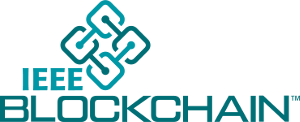IEEE Blockchain Technical Briefs - January 2019
A collection of short technical articles
This is a Special Edition of IEEE Blockchain Technical Briefs with the theme, Blockchain for IoT.
Co-Editors for this edition: Mohammed Atiquzzaman and Zheng Yan.
Towards Blockchain Networks Tailored to IoT Devices
By Pietro Danzi and Petar Popovski, Aalborg University
Since Nakamoto’s seminal paper, it has been clear that certain users, that do not have the communication and computational resources necessary to validate the updates to the replicated database, would inevitably be relegated to the edge of the blockchain network. A huge class of these users is represented by Internet of Things (IoT) devices, and represented by sensors, smart appliances, and other devices, often with frugal computation and communication capabilities. Nevertheless, the definition of “blockchain edge network” is still blurry and discussed in the following.
Participatory IoT Networks-on-Demand for Safe, Reliable and Responsive Urban Cities
By Bechir Hamdaoui, Oregon State University; Nizar Zorba, Qatar University; and Ammar Rayes, Cisco Systems
One key reason behind the recent success of Internet of Things (IoT) is the ever-increasing ability of IoT devices to perform various computation and sensing tasks, with network connectivity allowing them to communicate data over the Internet in real-time. Such capabilities make IoT devices, especially when considered collectively, great enablers for a myriad of new applications and services that could make urban cities safer and more responsive. To illustrate, consider a large city event, such as the Soccer World Cup, the Olympic Games, or a major concert. An event of such a scale presents city officials with major challenges, merely arising from the arrival and presence of massive numbers of event attendees and spanning various city matters, including surveillance, emergency management, and traffic control. The envisioned IoT-enabled applications will mitigate these challenges.
IOTA: Feeless and Free
By Serguei Popov, IOTA Foundation
Internet of Things (IoT) data is becoming a new distributed, large-scale digital asset fueling a myriad of services in the connected world. However, as a valuable asset, IoT data needs to be protected by their producers. This limits its capability to be shared while hindering the innovation potential that IoT and data could deliver. IoT data and services have to live within the boundaries controlled by each service provider. This creates islands of services, powered by Intranets of Things. The promise of a truly connected world stops when we cross those boundaries and our devices and data stops to work. Imagine a high mobile IoT device, like an electric vehicle, that cannot charge when in a different city, just because charging stations are managed by a different provider and their availability is unknown. Exchanging data and delivery services requires costs and generates value. In a truly connected world, value needs to be shared across involved stakeholders, likewise the responsibilities. This implies a fundamental trust problem, that cannot be solved by one actor taking the responsibility for all the others. It is therefore important to provide a decentralized trust backbone that allows to trade data, manage access to them and track responsibilities. Blockchain and DLTs provides this backbone. However, for this infrastructure to scale and be sustainable, its use should be free. Transacting on this infrastructure should cost zero, to allow access to billions of IoT devices and data. With such an infrastructure new business models for a truly connected world can be created, with no predefined rules imposed by pre-existing economic models. IOTA provides the technology to develop this infrastructure: it is feeless and free, scalable and lightweight enough to be integrated with IoT devices.
Enabling Distributed and Trusted IoT Systems with Blockchain Technology
By Lijun Wei, Shaowei Liu, Jing Wu, and Chengnian Long, Department of Automation, Shanghai Jiao Tong University, and Key Laboratory of System Control and Information Processing, Ministry of China; Shiyao Ma and Bo Li, Department of Computer Science and Engineering, Hong Kong University of Science and Technology
Internet of Things (IoT) has undergone a major development in recent years, and it poses a unique opportunity with great potential in many application scenarios. It integrates advanced information, computing, communications, and sensing technologies to establish a global and dynamic network infrastructure, in which a variety of smart objects (RFID tags, sensors, smartphones, wearable devices, and etc.) are interconnected. Information and data are collected, shared and distributed for full awareness, reliable delivery and intelligent processing. Currently, the IoT has largely adopted centralized operation mode in the fields of intelligent transportation, smart home and medical care, often referred as the "chimney" IoT architecture. This encounters problems concerning communication costs, trust, data value and privacy. Specifically, the current IoT ecosystem relies on a centralized platform (figure 1), which essentially serves as a control center for device connection and information management. All users need to connect to the control center or/and central cloud to join the ecosystem. However, with the dramatic growing scale of the IoT, this architecture suffers from high connectivity costs and increased maintenance costs. Moreover, centralized systems are vulnerable to targeted attacks by adversaries with network expansions.
2018-2020 IEEE Blockchain Technical Briefs Editorial Board
Subscribe to the IEEE Blockchain Technical Briefs
Join our Blockchain Technical Community and receive our Technical Briefs by email.
IEEE Blockchain Technical Briefs Editorial Board
Gora Datta, FHL7, SMIEEE, SMACM, Managing Editor
2024 Editorial Team
Justin Y. Shi, PhD, Editor-in-Chief
Boleslaw K. Szymanski, PhD
R.L. Shankar, PhD
Imran Bashir
Nicolae "Nicu" Goga, PhD
Constantin “Viorel” Marian, PhD
View the 2023 IEEE Blockchain Technical Briefs Editorial Board
View the 2022 IEEE Blockchain Technical Briefs Editorial Board
View the 2018-2020 IEEE Blockchain Technical Briefs Editorial Board
Past Issues
Read the top five most popular IEEE Blockchain Technical Briefs articles.
Read more (PDF, 731 KB)























